Tourist attractions in Bucharest. Things to see while you visit the capital
A busy 3,5 million people town, Bucharest offers a cocktail of classical architecture from the 19 century, mixed with Stalinist massive buildings from the communist age, and a dizzying night life. It’s a city with crazy traffic, with surprisingly rich museums of art, history and traditional crafts. With green areas of absolute tranquility and busy shopping malls and clubs. Along the Dâmbovița river, you can jump from old neighborhoods with narrow streets and houses with valuable facades in a state of disrepair, to 21st century glass office buildings. It seems like a city in the making, undecided on the border between a Western European capital and an Oriental hive.
And it’s the same with the people: almost all of the young speak English and are Western-minded, but it won’t take long to feel lurking the spirit of the empires that marked Romanians the most: the passion of Latins, the sweet warmth of the Turks and the sophisticated tastes of the French.
Take your time to explore it in depth, for there is a lot to see, starting from the ruins of the Royal Palace of Vlad the Impaler, the legendary king from who’s time we have the first mention of Bucharest. You will see why it used to be called the Little Paris, during the time the Arch of Triumph and numerous palaces and public buildings were built. You will witness the ambitions of the dictator that commissioned the largest civil building in the world. Or live the passion of sports on one of the most modern stadiums on the continent, maybe gamble in one of the numerous casinos. Mingle with the regular people on some of the busiest avenues like Victory Lane, Magheru Boulevard or Independence Avenue. And maybe even have a taste of “mici”, the local version of hamburger. You’ll find them very tasty with some mustard and a cool beer.
If you need help getting around, or want a guided tour through the country, feel free to contact me.
Old City Center

 The narrow pedestrian streets of this area are the most fashionable place in the city right now. Pubs and coffee shops are one next to another, while the night life means party till dawn. Besides the chance to see some of the best historic buildings of the city, it’s the ideal place to meet people – locals and foreign tourists. [1] on map
The narrow pedestrian streets of this area are the most fashionable place in the city right now. Pubs and coffee shops are one next to another, while the night life means party till dawn. Besides the chance to see some of the best historic buildings of the city, it’s the ideal place to meet people – locals and foreign tourists. [1] on map
Romanian Atheneum

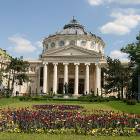 The concert hall that hosts classical music festival George Enescu and numerous concerts and conferences. Very balanced building style, achieved by French and Romanian architects of XIX century.
The concert hall that hosts classical music festival George Enescu and numerous concerts and conferences. Very balanced building style, achieved by French and Romanian architects of XIX century.
To visit the building inside, when there are no concerts, you need to contact George Enescu Philarmonic. [2] on map
details
Village Museum inside Herăstrău Park

 If you only visit Bucharest, this is a not to be missed opportunity to get a glimpse of the rest of the country. Full scale houses from all historic regions of Romania, traditional crafts, costumes and events taking place in one of the largest parks of the city. Outside of this museum you can have a walk through shady alleys, feed the chipmunks or have a boat ride over the lake. Tickets:~ 2 euro. Audio guide: 12 euro, guiding personal: 70 euro. Visiting hours: 9-17 on Mondays, 9-19, rest of the week. [3] on map
If you only visit Bucharest, this is a not to be missed opportunity to get a glimpse of the rest of the country. Full scale houses from all historic regions of Romania, traditional crafts, costumes and events taking place in one of the largest parks of the city. Outside of this museum you can have a walk through shady alleys, feed the chipmunks or have a boat ride over the lake. Tickets:~ 2 euro. Audio guide: 12 euro, guiding personal: 70 euro. Visiting hours: 9-17 on Mondays, 9-19, rest of the week. [3] on map
“House of the People” / Palace of Parliament

 The largest building in Europe, and second in the world after the Pentagon. The megalomanic project of communist dictator Nicolae Ceaușescu is a massive marble block, but inside it has hundreds of majestic halls with crystal chandeliers, velvet draperies and monumental marble staircases. The piece de resistance is the hall where Romanian Parliament meets. For inside visits, booking is necessary. Ticket costs around 4 euro, usual visiting hours are 10-16, Parliament meetings mean restrictions for certain areas. You also have to have your passport at hand. [4] on map
The largest building in Europe, and second in the world after the Pentagon. The megalomanic project of communist dictator Nicolae Ceaușescu is a massive marble block, but inside it has hundreds of majestic halls with crystal chandeliers, velvet draperies and monumental marble staircases. The piece de resistance is the hall where Romanian Parliament meets. For inside visits, booking is necessary. Ticket costs around 4 euro, usual visiting hours are 10-16, Parliament meetings mean restrictions for certain areas. You also have to have your passport at hand. [4] on map
details
Natural Sciences Museum “Grigore Antipa”

 Some of the richest collections of zoology in the world, gathered in more than a century. Includes complete skeletons of mammoths, elephants, stuffed animals. The museum has been revamped recently and now includes multimedia projections and interactivity. Tickets: ~ 5 euro. Visiting hours: 10-19, closed on Monday. [5] on map
Some of the richest collections of zoology in the world, gathered in more than a century. Includes complete skeletons of mammoths, elephants, stuffed animals. The museum has been revamped recently and now includes multimedia projections and interactivity. Tickets: ~ 5 euro. Visiting hours: 10-19, closed on Monday. [5] on map
details.
National History Museum

 Learn something about the past of Romanians, starting with the battles between Dacians and Roman Empire, as recorded on a 1:1 replica of the column of Trajan in Rome. See part of the national Treasury, that includes crowns of kings and prehistoric jewelries. Plus, the building itself is a superb example of classical French architecture. Tickets: ~ 2 euro. Visiting hours: 10-18, from Wednesday to Sunday, closed on Monday and Tuesday. [6] on map
Learn something about the past of Romanians, starting with the battles between Dacians and Roman Empire, as recorded on a 1:1 replica of the column of Trajan in Rome. See part of the national Treasury, that includes crowns of kings and prehistoric jewelries. Plus, the building itself is a superb example of classical French architecture. Tickets: ~ 2 euro. Visiting hours: 10-18, from Wednesday to Sunday, closed on Monday and Tuesday. [6] on map
details.
National Art Museum

 Inside the former Royal Palace, you will find the most important paintings held by the Romanian state. Paintings by: Rembrandt, Tintoretto, Paul Rubens, Giorgio Vasari, El Greco, Jan Van Eyck, Peter Breughel The Young, Tickets: ~ 2-3 euro. First Wednesday of every month, free access. Visiting hours: 11-19, from Wednesday to Sunday, closed Monday and Tuesday. [7] on map
Inside the former Royal Palace, you will find the most important paintings held by the Romanian state. Paintings by: Rembrandt, Tintoretto, Paul Rubens, Giorgio Vasari, El Greco, Jan Van Eyck, Peter Breughel The Young, Tickets: ~ 2-3 euro. First Wednesday of every month, free access. Visiting hours: 11-19, from Wednesday to Sunday, closed Monday and Tuesday. [7] on map
Cotroceni Palace

 The palace of Romanian medieval princes, now Presidential palace. Fine Romanian architecture and history. Palace’s church included in the tour. Tickets: 6 euro (english guide included). Visiting hours: 9 – 17:30, from Tuesday to Sunday. Photo tax: 10 euro. [8] on map
The palace of Romanian medieval princes, now Presidential palace. Fine Romanian architecture and history. Palace’s church included in the tour. Tickets: 6 euro (english guide included). Visiting hours: 9 – 17:30, from Tuesday to Sunday. Photo tax: 10 euro. [8] on map
details.

Mogosoaia Palace

 Just 15 km outside of Bucharest, this palace is a masterpiece of Romanian architecture, from what was a local renaissance during prince Brancoveanu. The palace host an art collection and the surrounding gardens are also part of attraction. Ticket: 1 euro, photo ticket: 4 euro. Visiting hours: 10-18 from Tuesday to Sunday. [9] on map
Just 15 km outside of Bucharest, this palace is a masterpiece of Romanian architecture, from what was a local renaissance during prince Brancoveanu. The palace host an art collection and the surrounding gardens are also part of attraction. Ticket: 1 euro, photo ticket: 4 euro. Visiting hours: 10-18 from Tuesday to Sunday. [9] on map
details
Technical Museum in Carol Park

 One of the most important parks in the city offers has shady alleys with secular trees, a lake with boats to rent and memorial monuments. Also in this park are two small museum: the first is dedicated to inventions and machinery. Here you can see a steam engine, a sonic engine, Edison’s dynamo, electric and airplane engines. Tickets: ~ 1 euro. Visiting hours: 9-17, closed on Monday. Close to it is The Tower of Vlad the Impaler, a replica of Poenari Fortress. [10]
One of the most important parks in the city offers has shady alleys with secular trees, a lake with boats to rent and memorial monuments. Also in this park are two small museum: the first is dedicated to inventions and machinery. Here you can see a steam engine, a sonic engine, Edison’s dynamo, electric and airplane engines. Tickets: ~ 1 euro. Visiting hours: 9-17, closed on Monday. Close to it is The Tower of Vlad the Impaler, a replica of Poenari Fortress. [10]
details.

Romanian Peasant Museum

Completing the separate Village Museum, this place has vast collections of folkloric art, handmade costumes from different areas, ceramics, sculpted wood and other crafted object. Events and fairs where you can buy authentic souvenirs are held regularly. Tickets: 2 euro. Visiting hours: 10-18, Tuesday to Sunday. [11] on map
Aviation Museum

 The country of flying pioneers like Aurel Vlaicu, Traian Vuia and Henry Coanda has plenty to show about the history of aviation. Full scale historic planes, sketches and engines on display. Visiting hours: 9-16 from Tuesday to Friday, 10-17 Saturday and Sunday [12] on map
The country of flying pioneers like Aurel Vlaicu, Traian Vuia and Henry Coanda has plenty to show about the history of aviation. Full scale historic planes, sketches and engines on display. Visiting hours: 9-16 from Tuesday to Friday, 10-17 Saturday and Sunday [12] on map
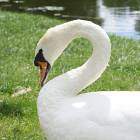
Cișmigiu Gardens

The oldest park in Bucharest is small but has the most charming alleys, a poetic lake and even swan colonies. [13] on map
details
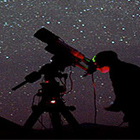
Astronomic Observatory

Passionate about stars? Care to see for yourself how Venus looks like from Romania? Why not use the powerful telescopes of the Astronomic Observatory with professional guidance? Ticket: 1 euro. Visiting hours: for exhibitions – 14-18 Tuesday to Friday. Night observations from 19-22 only Tuesday, Friday and Saturday. [14] on map

University Square

This plaza is packed with history and remarkable buildings. It was here that the barricade was raised against tanks, during the anti-communist revolution of 21 December 1989, overthrowing dictator Ceaușescu. And also here took place the 3 months massive protests against the Restoration carried by the socialist government in the following spring. Since than, it’s the place where all civil protests take place. The most imposing building is that of Bucharest University, a well balanced building from the monarchical age. Right behind it is the Architecture University, exhibiting splendid Romanian style sculpted arches. On the other side of the main N-S boulevard of the city is the famous Intercontinental Hotel, maybe not as impressive now with its 77 m height, but a sensation during the 70s. Next to it, it’s the renovated National Theater. Crossing the street, you see other fine examples of classical architecture: the Agriculture Minister and Colțea Hospital, the oldest hospital in the country, which even has its own church. Across the street is the Museum of Bucharest, also a historic building.

National Arena

One of the most modern football stadiums in Europe, this arena hosted the Europa League Final in 2012 and is candidate for other similar events. It’s here where the national football team plays its home games, but also used by other popular teams in the city, like Rapid, Steaua and Dinamo, for some special matches. The access to the surrounding park is free, but for an inside visit with the lights turned on and atmosphere, is best to buy tickets for a game.

Orthodox Patriarchal Cathedral

The most important Orthodox church in the country is an example of Byzantine and Romanian architecture, inside a complex that includes the Palace of Patriarchy, that was used by the Romanian Parliament for a while.

Armenian Chruch

Splendid example of Armenian architecture, with fine sculpted masonry. Next to it there is “Dudian”, the Armenian Culture Museum. Visiting hours: 9-14, daily.

Justice Palace

The work of famous Romanian architects and inaugurated in 1900, this majestic massive building was meant to epitomize the idea of sovereign Justice through the image of an imposing tribunal. If you visit the old city center, make just a few steps further to the south, to take some pictures of this unique building from across the Dâmbovița river. It’s right next to Unirea Shopping Center, one of the busiest places in town.

National Opera House

For lovers of classical music there are numerous opportunities of spending the evening. There are the concerts held in various concert halls by the Philarmonic, the musicals in the Operetta, the ballet in the National Theater or the regular concerts of National Opera. International stars started or sang here, including: Hariclea Darclee, Angela Gheorghiu, Mariana Nicolesco, Ileana Cotrubaș, Felicia Filip, Nicolae Herlea, Ludovic Spiess, Viorica Cortez.

Victory Lane

Calea Victoriei is the oldest known street in town, and everywhere you look there’s something to see. In less than 3 km, starting from Dâmbovița river, up to Victory Plaza, you will see the largest collection of museums and landmark buildings. Included are: History Museum, Atheneum, National Art Gallery, Music Museum, University Library. Luxury hotels, like Novotel, Continental and Athene Palace are on the way, along with famous restaurants like Capșa or casinos like that in Vernescu House.

Globus Circus

Moments of fun for children but not only. Clowns, acrobats and trained animals give representations in this special building, found in a large park, not too far from center, and close to Ștefan cel Mare subway station.

St Spiridon Cathedral

Is the largest Orthodox cathedral in the city, dating from the dynastic age. It was recently renovated and displays frescoes by Gheorghe Tattarescu, combining Byzantine and Renaissance style.

Tineretului Park

In one of the largest parks in Bucharest there are plenty of places for relaxation, including a lake and sport courts. An amusement park for children (The City of Children) is currently under reconstruction. Also in this park is the largest indoor sports arena, used for concerts and sportive activities, known as Sala Polivalenta. [11] on map

Basarab Bridge

Meant just as a practical solution to ease the perpetual traffic congestion in Bucharest, the bridge over the railway turned into a landmark construction. It’s not as close to the center to reach it by foot, so you would have to take the subway or a car. But if you want some revealing night images from Bucharest to take home, the modern architecture of this bridge should do the trick.

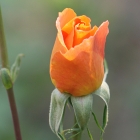
Botanical Garden

Just across the street from Cotroceni Palace, there is a vast green area, with a pond with wild ducks, lily flowers and secular trees. Main attractions are the rose garden and the greenhouses with cactus, palm trees and other exotic plants.

Bellu Cemetery

For those that don’t mind a morbid place, this is the Romanian version of Parisian Pere Lachaise Cemetery. Most of national artists are buried in this historic cemetery, some tombs being adorned with valuable sculptures. Also, a distinct section of this cemetery is occupied with the tombs of those killed during the revolution of 1989 (Heroes of the Revolution Metro Station).

Triumph Arch

One of the reasons Bucharest is called the Little Paris. It replicates the Roman arches, like that of Constantine the Great, and the arch built by Napoleon in Paris. On certain days, the terrace on top is opened and you can get a nice panorama of the surroundings. The bass-reliefs and the inscriptions remember the historic dates when troops marched underneath it, after the Independence War and after the Unification, as well as the kings that were in power then.

Free Press House

This is an example of the city could have looked if the Stalinist architecture would have remained the norm. It was built after WW2, when Soviet troops were still occupying the country. It’s a complete replica of Lomonosov University in Moscow, and such buildings were also built in other occupied cities, like Warsaw. During communism here was a real Orwellian “Ministry of Truth”, as it was occupied by the propaganda apparatus, especially by the official newspaper, “Scânteia” (The Spark). An immense statue used to sit in front of it. After the Revolution, it was renamed and hosts newspapers, publishing houses and TV stations. It’s just across the street of Herăstrău Park, not far from Village Museum and on the way to Băneasa and Otopeni airports.

National Bank Palace

It was built as a private bank, by a XIX century tycoon, who ironically went bankrupt paying for this great classical building. It is found in the Old City Center and was recently renovated. The imaginable safety precautions of a central Bank make it not so friendly to visitors, but it has plenty to show on the inside as well, with art collections, frescoes and a monetary museum.

National Library

Unlike the previous headquarter of National Library, found in the Old City Center, and the Central University Library, on Victory Bvd., this is a new building with minimalist architecture. The advantage is a plus in functionality, with elevators and electric staircases that go to the four floors, from the atrium. Temporary exhibitions and largest collection of books in various languages are hosted in this building, found on the other bank of Dâmbovița river, next to Unirea Shopping Center.

St Joseph Catholic Cathedral

It’s the largest Catholic Cathedral in Bucharest and was even used for a mass, by Pope John Paul II, during his visit. A large office building, built next to it caused a national scandal, and after years of trials, the court ordered for that building to be demolished, an action not yet carried out. Another important Catholic Church is the Italian Church, on the boulevard that connects University to Roman Square. And very close to that is also an Anglican Church.
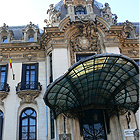
Enescu Music Museum

For a while this palace was used by the greatest Romanian composer, George Enescu, who happened to be married with the daughter of one of the wealthiest men in the country. Found on Victory Blvd, the architectural value of this palace is unquestionable. Tickets: 1,5 euro. Visiting hours: 10-17, Tuesday-Sunday.

CEC Bank Palace

Another landmark building found on Victory Lane, just across of History Museum. It’s the work of a French architect who used an eclectic style. It’s still used by the state owned CEC Bank, but also for receptions, including those organized by the royal house of Romania.
- Home Page
start page - Architecture
landmark buildings - Sacred architecture
places of worship - Nature
landscape photography - Concert
performing artists - Christmas
Santa Claus pictures
- Jooble
jobs for photographers - Escape
an out of control blog - Merry Christmas
The best organizer of Christmas parties - Astro photo
Eclipse hunting and astrological photography

